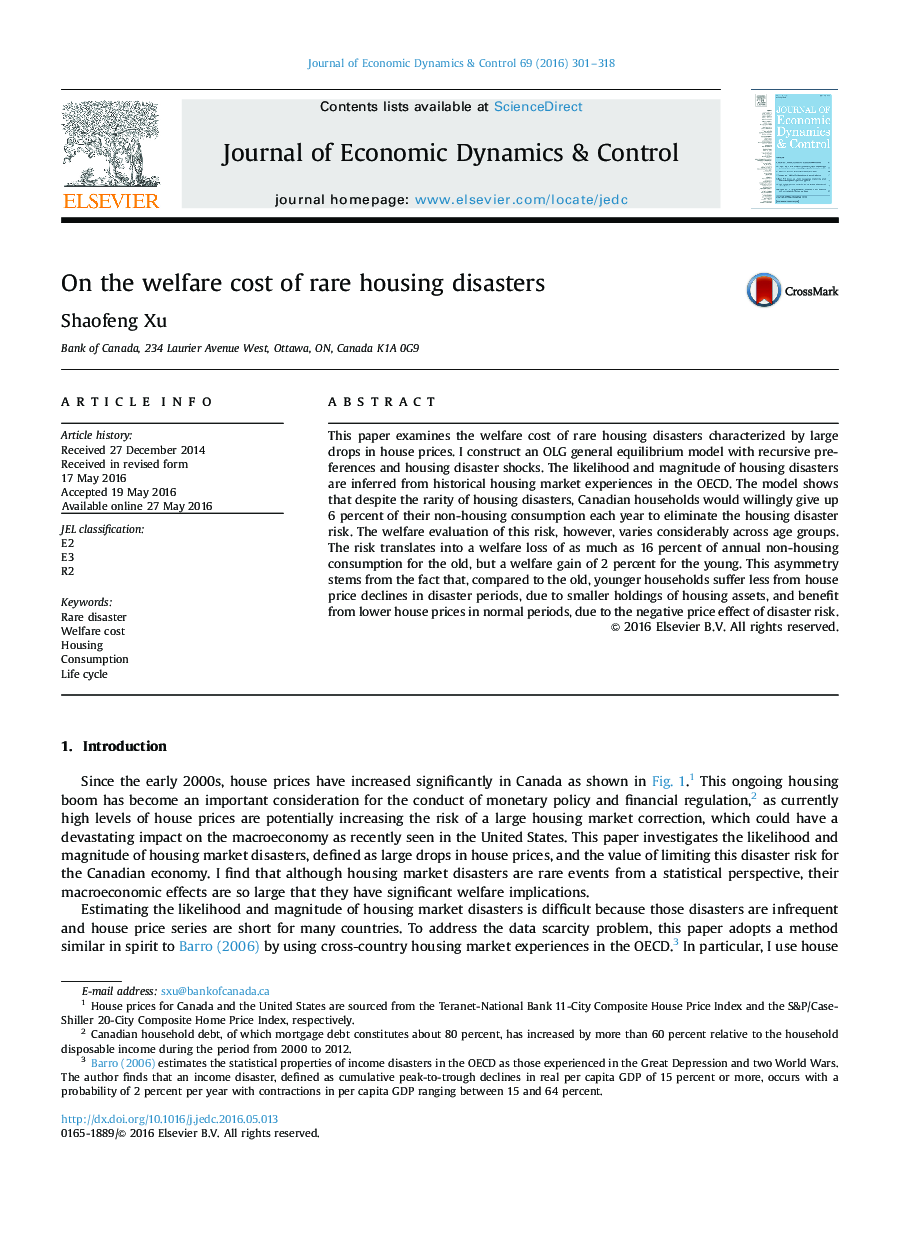| Article ID | Journal | Published Year | Pages | File Type |
|---|---|---|---|---|
| 5098152 | Journal of Economic Dynamics and Control | 2016 | 18 Pages |
Abstract
This paper examines the welfare cost of rare housing disasters characterized by large drops in house prices. I construct an OLG general equilibrium model with recursive preferences and housing disaster shocks. The likelihood and magnitude of housing disasters are inferred from historical housing market experiences in the OECD. The model shows that despite the rarity of housing disasters, Canadian households would willingly give up 6 percent of their non-housing consumption each year to eliminate the housing disaster risk. The welfare evaluation of this risk, however, varies considerably across age groups. The risk translates into a welfare loss of as much as 16 percent of annual non-housing consumption for the old, but a welfare gain of 2 percent for the young. This asymmetry stems from the fact that, compared to the old, younger households suffer less from house price declines in disaster periods, due to smaller holdings of housing assets, and benefit from lower house prices in normal periods, due to the negative price effect of disaster risk.
Related Topics
Physical Sciences and Engineering
Mathematics
Control and Optimization
Authors
Shaofeng Xu,
